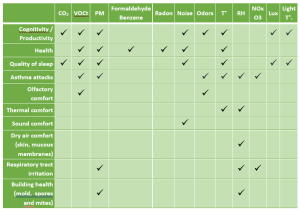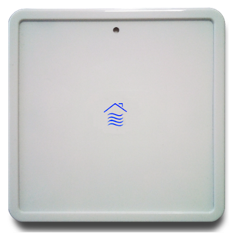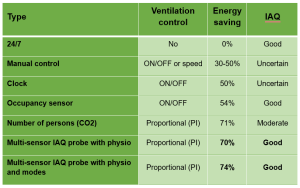Learn how to protect your health – and not just from COVID-19
Olivier Martimort, CEO, NanoSense.
-
Indoor Air Quality (IAQ), a major concern not addressed often enough
Indoor air quality is a largely neglected topic. On average we spend more than 90% of our time indoors, where air is 5 to 10 times more polluted than outdoors.
Today almost everybody recognizes the dangers of outdoor pollution, but few people consider the risks of exposure to indoor pollutants.
Indoor air quality is affected by outdoor pollution plus indoor pollutant emissions caused by human activity and building/furnishing materials. But more importantly, it’s necessary to understand that pollutants tend to accumulate indoors.
Whereas outdoor pollution is hard to avoid, improving indoor air quality is well within our control. Measuring the pollutants is the first step towards improving indoor air quality (IAQ), which is sadly poor in most cases.
-
Main indoor pollutants and environmental factors to be considered
-
- Pollutants: CO2 (human exhalation), VOC (cleaning products, building materials, furniture, odours, perfume, perspiration, etc.), ozone (laser printers, electric motors, etc.), particulate matter (mainly from outdoor combustion sources i.e. heating, road traffic – plus indoor sources e.g. smoking, cooking…)
- Environmental factors: temperature & humidity, noise & light levels, light temperature.
Light affects melatonin (sleep hormone) levels which impacts productivity, just like temperature extremes and noise.
-
CO2 is not a universal indicator of indoor air quality
CO2 has long been regarded as the prime indicator of indoor air quality. However, today this parameter alone is insufficient to define air quality as a whole. When we breathe, CO2, VOC (Volatile Organic Compound) and PM (Particulate Matter) enter the bloodstream via the lungs, then reach the brain (accounting for 42% of human energy consumption) affecting many cognitive functions.
It should be taken into account that the mix of these three pollutants is far unhealthier than CO2 alone. Likewise, environmental factors play a huge role in worsening cognitive functions and productivity. According to a study conducted by the Harvard Institute, productivity of the average employee increases by $6,500 per year just by increasing air renewal – at an additional cost of just $14 to $40 per year/employee (depending upon the location’s climate).
The EnOcean Alliance is an international association of leading companies in the building and IT industries founded in 2008. The open, non-profit organization is committed to enabling and promoting interoperable, maintenance-free and proven eco-systems based upon the wireless EnOcean radio standard (ISO/IEC 14543-3-10/11). With their decades of experience, EnOcean Alliance members strive to co-create a healthy, safe, and sustainable environment in smart homes, intelligent buildings and smart spaces for the benefit of all.
NanoSense, an EnOcean Alliance member specialized in air quality management, has recently launched a new standardized EnOcean Equipment Profile (EEP) related to physiological factors as mentioned above for productivity, as well for the quality of sleep, building health (mold growth, condensation, particle deposition…) and more. Those factors take into account the combination (“cocktail effect”) of various pollutants and environmental factors. They are used to express AQ (Air Quality) in a more intuitive way but can also be used as set points for remediation control (mainly through ventilation). For example, CO2 has no impact on health.

The table above summarizes the cocktail effect for different physiological impacts.
-
Indoor Air Quality – impact on health
The impact of air quality upon human health is a major concern – 9 million people worldwide die prematurely every year because of a harmful air exposure. To put this into perspective, the total number of global deaths attributable to the COVID-19 pandemic in 2020 is roughly 3 million (or 3 times less!), yet the subject of indoor air quality receives much less attention. And this pandemic is also related to air quality, since air renewal based upon IAQ could have saved many lives. Therefore, indoor air quality is a global issue – long-term exposure to polluted indoor air causes a broad range of health issues (i.e. respiratory illness, heart disease and cancer). The fact that the dire consequences of exposure to polluted indoor air are not immediate doesn’t lessen the gravity of the problem.
In addition, certain populations are more vulnerable than others to indoor air quality. Pregnant women, children, the elderly and individuals with pre-existing conditions (asthma, allergies…) are those who most need protection from air pollution. Hence the importance of measuring and controlling air quality e.g. with NanoSense’s multi-sensors, IAQ probes or equivalent systems.
Air Quality monitoring and control is also essential in professional and industrial sectors, helping to reduce absenteeism and improve employee productivity through better health and comfort.
According to a study conducted by the National Institute of Health (NIH, Harvard) the cost of lost workdays due to absenteeism resulting from a degraded IAQ is estimated to average $480/employee/year!
-
Improving indoor air quality whilst reducing energy consumption by 70%? Yes, we can!
We have learned from the pandemic that improving indoor air quality is not a luxury, but an absolute necessity. Now that an energy crisis directly follows the pandemic, the main question is: how best to balance the need for clean indoor air with the need to save energy in buildings?
The answer is simple. First measure the pollutants, then control ventilation accordingly. This is called On-Demand Ventilation.
The way to achieve sustainable IAQ according to NanoSense, expert in air quality for more than 20 years, is by deploying IAQ probes throughout buildings in order to monitor indoor air quality. These probes can then automatically control the ventilation system. Instead of running the ventilation non-stop (24/7 as in most buildings), with On-Demand Ventilation the airflow rate is governed according to indoor air quality. This is how we control heating and cooling today, so why not ventilation?

This process can save more than 70 % of HVAC energy consumption. Additionally, the NanoSense IAQ probe features an algorithm estimating the physiological impact upon the building and its occupants. This allows companies to control air quality based upon productivity and health goals. It’s a multi-pollutant and multi-protocol probe that provides an overall picture of the impact of many pollutants, and it can be integrated into many types of building ecosystems.
ENERGY SAVING ESTIMATIONS BASED UPON VENTILATION CONTROL:

Energy savings estimate based upon different methods sorted in ascending order – as per the EN 13779 standard
- The basic, less adequate solution is 24/7 (100% of the time) ventilation. On the one hand this ensures good air quality as the airflow is generally dimensioned for worst-case occupancy (for example: if a room can potentially welcome 20 people but is in reality occupied by 5 people, the airflow will be dimensioned for 20 people and over-ventilate most of the time).
- Manual control is performed without intelligent feedback since air quality cannot be perceived by our senses, we can only detect odours. IAQ result is totally uncertain. An IAQ display would improve manual control efficiency.
- By using a timer and completely cutting off ventilation during unoccupied times (typically at night, on the weekends in office spaces and during the day in residential properties) we can estimate running the ventilation 40% – 46% of the time (8 am to 7 pm in offices = 11 hours out of 24). This represents a saving of 100 – 46 = 54% based upon a level of supposed occupancy that has nothing to do with air quality. IAQ result is uncertain if the timer is not set properly (65% of the case after a few years).
- An occupancy sensor is better than a timer (as the timer mechanism is frequently badly set after a certain length of time). Like a timer, sensor switching is only ON/OFF and the energy saving is poor. As ventilation is running at 100% during occupancy, the energy consumed is probably excessive but the IAQ result is good (over-ventilation).
- Control based upon CO2 levels is the most basic form of On-Demand ventilation adjustment as it is simply based upon an estimated number of occupants that has nothing to do with air quality. This is still more efficient than control using occupancy sensors as it governs proportional airflow. We can estimate an average flow rate of 50% during the presence period, so a gain of half of the 54% of the version with occupancy sensor (i.e. 27%), which would make a total of 54 + 27 = 81%. However, a regulated version ensures a minimum ventilation (never a 0% flow) for the health of the building (mold…) that consumes intrinsically 10% more energy, that is to say a saving of 71%. Some go further by sacrificing this minimum ventilation for the sake of building health, but it’s not recommended. As ventilation is not based upon IAQ but only upon CO2 levels, the IAQ result is uncertain.
- For a multi-sensor probe with a proportional integral control loop (PI) based on physiological indexes, like the IAQ EP5000, the gain may not be higher than a ventilation based upon CO2. This is the most sophisticated On-Demand ventilation control. However, when necessary it may require more ventilation than the CO2-based control (due to taking other pollutants into consideration). It can also take extreme ambient temperature, bad lighting and noise into consideration. This extra energy consumption is the price to pay for ensuring good air quality with beneficial associated productivity and health-related return on investment.
- When modes are used (Comfort, Eco, Night…) setpoints are adapted to the situation and additional savings can be expected (particularly for the night mode). This gain obviously depends upon the adjustment of the requirements during non-occupancy periods and at night. A lump-sum gain of 4% has been estimated.
-
Energy consumption related to type of ventilation
According to a study conducted by the French BBC Effinergie labeling body, the energy consumption of HVAC depends on the type of ventilation and its geographical location.
Simple-flow (not filtered) HVAC consumes more energy by emitting hot air in winter and cool air in Summer. So the balance between simple-flow and double-flow really depends on average weather conditions and geographical location.
Dual-flow has two motors (supply and exhaust) that consume more electricity than two simple-flow motors because of the filter pressure drop as filtering is mandatory to maintain the efficiency of the heat exchanger over time.
In any case, it is important to use On-Demand ventilation in order to save up to 70% of energy. Other savings should also be considered, like the cost reduction on filters (replaced less often) and lesser associated manpower requirements.
Please note that this illustration shows simple-flow consumption in a moderate climate, with no air conditioning. With simple-low in hot regions like the Middle East, we would see similar consumption to central Europe due to air conditioning.
-
Natural ventilation! Is it a good idea?
During the warm seasons, we used to ventilate by opening windows. Is it a good idea? No. Generally, the HVAC will continue running for nothing and burn unnecessary energy. In order to cut off ventilation automatically, EnOcean open-window sensors can be used and paired with the IAQ probe. This can bring a huge energy saving and should always be considered.
But is window opening really safe? Outdoor air may be polluted and worse than indoor air. Traffic noise can add to the problem. Under such circumstances, the NanoSense IAQ probe can receive air-quality EnOcean telegrams from outdoor air-quality sensors (one per facade) and compare the physiological effects to issue dedicated visual warnings. This warning can also be based on Well V2 outdoor pollution level depending on the setting.



 English
English  Deutsch
Deutsch  简体中文
简体中文  Italiano
Italiano  日本語
日本語 

